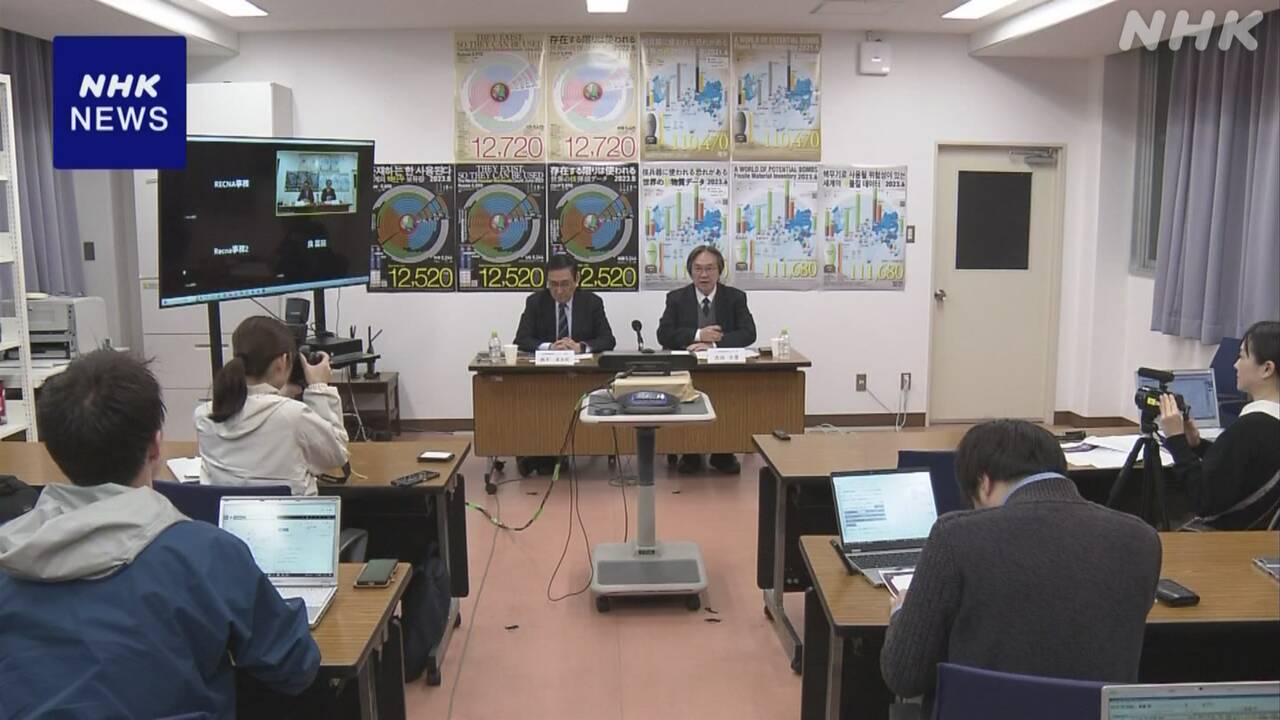As a result of three years of research, a research group including the Nagasaki University Nuclear Weapons Abolition Research Center has compiled 22 policy recommendations on what the countries involved should do to reduce the risk of nuclear weapons being used in Northeast Asia. I did.
The Nagasaki University Nuclear Weapons Abolition Research Center is conducting a three-year project in collaboration with experts from the United States, South Korea, and other countries to simulate the damage that would occur if nuclear weapons were used in Northeast Asia. We have been conducting research to reduce the risk of
The research was completed at the end of last year, and the research group compiled and published a report.
The report states that ``nuclear deterrence'' may ultimately increase the risk of using nuclear weapons, and that
the United States and China should proceed with dialogue on ``no first use'' and ``nuclear deterrence'' of nuclear weapons. The United States
has made 22 recommendations, including that
the
United States should propose an agreement with China and North Korea to ban low-yield "tactical" nuclear weapons .
The research group has published the report on its website and will also present it to policymakers in each country.
At a press conference held on the 3rd, Professor Tatsujiro Suzuki of Nagasaki University said, ``I think this is an ambitious proposal to make Nagasaki the last atomic bombing site.The development of easy-to-use nuclear weapons is an extension of conventional war.'' ``The risks are increasing, and citizens need to engage in discussions to reduce our dependence on nuclear deterrence.''
Detailed simulations of nuclear use cases and scale of damage
The Nagasaki University Nuclear Weapons Abolition Research Center jointly conducted detailed simulations with the Nautilus Institute in the United States, which researches security, to determine in what situations nuclear weapons would be used and how much damage would be caused. We have put together recommendations for concrete measures to ensure that nuclear weapons are never used in Northeast Asia again.
The project is a three-year plan starting in 2021, and in the first year, we compiled 25 hypothetical cases between 2025 and 2030, including how and where nuclear weapons would be used. .
A year ago, in 2022, four of these cases will be added to a case based on Russia's military invasion of Ukraine, for a total of five cases in which there is a possibility that nuclear weapons will be used in Northeast Asia. The simulation was conducted after determining specific conditions based on the nuclear strategies announced by each country and the international situation.
▽ The number of people who died immediately after the atomic bombing,
▽ Long-term cancer caused by the effects of the scattered radioactive materials. We have estimated the number of people who will die from this.
As a result, in the hypothetical scenario in which North Korea, cornered by domestic and international economic pressure, uses nuclear weapons as a threat, 11,000 people would die in a few months and suffer from cancer over the long term. It was estimated that between 16,000 and 36,000 people died. (case 1)
In addition, the scenario that would cause the greatest damage is a hypothetical case in which an attack by China on Taiwan's defense facilities causes Taiwan to counterattack with military support from the United States and escalate the situation. (Case 5)
It was estimated that 2.6 million people would die in a few months from the use of 24 nuclear weapons in China and the United States, and between 96,000 and 830,000 people would die from cancer over the long term.
As a result of the project's research, it has become clear that many policies implemented for the purpose of deterrence may actually increase the risk of using nuclear weapons, and the final report aims to reduce reliance on nuclear deterrence over the medium to long term. To this end, governments must improve the regional security environment and "enable leaders to choose less destructive paths."

